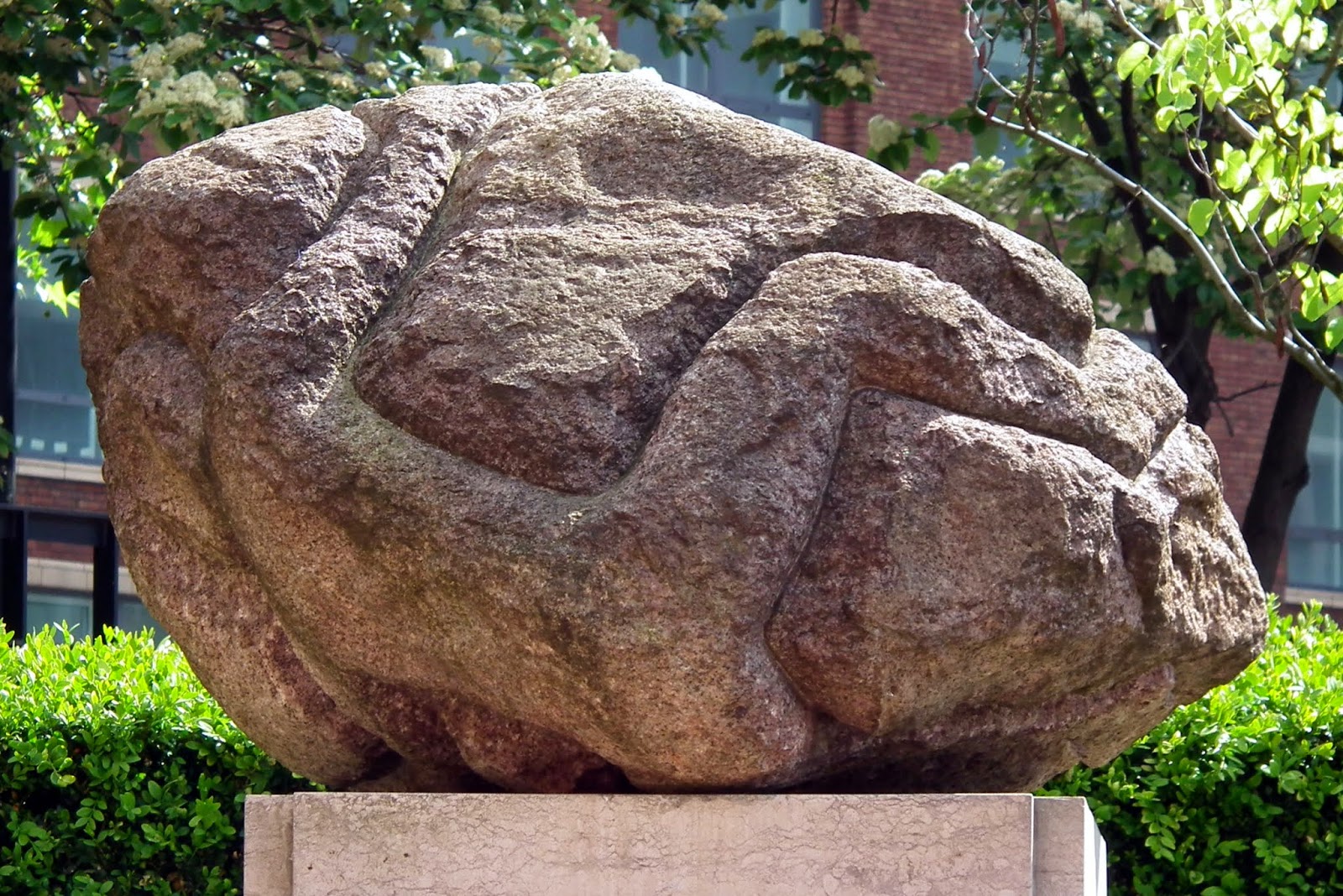 The work has roots right back in Gormley's early career when he still carved stuff, before he abandoned the chisel took up the welding torch.
The work has roots right back in Gormley's early career when he still carved stuff, before he abandoned the chisel took up the welding torch. From 1979 he experimented with a series of Man Rocks, stones from the sea off Portland. Gormley would get family, friends and colleagues to clutch the rock as he chalked their outline. The outline was then "carved to an adequate depth where the form was beginning to be self-revealed, so is on the cusp between a drawing and the arising of self-determined form," the artist says.
For Planets, the idea of motion is introduced by the use of glacial erratics brought from a Swedish quarry. These rocks of ages had been transported for hundreds of miles before being spewed out at the edge of the ice floe.









2 comments:
When the work called Planets was finally installed in 2002, would you say it met with a warm reception from the public? From the scholarly population?
Planets arrived to a few positive reviews but seems to have more or less disappeared from the radar, mentioned only as 'another Gormley work is in the BL forecourt," that sort of thing.
Post a Comment